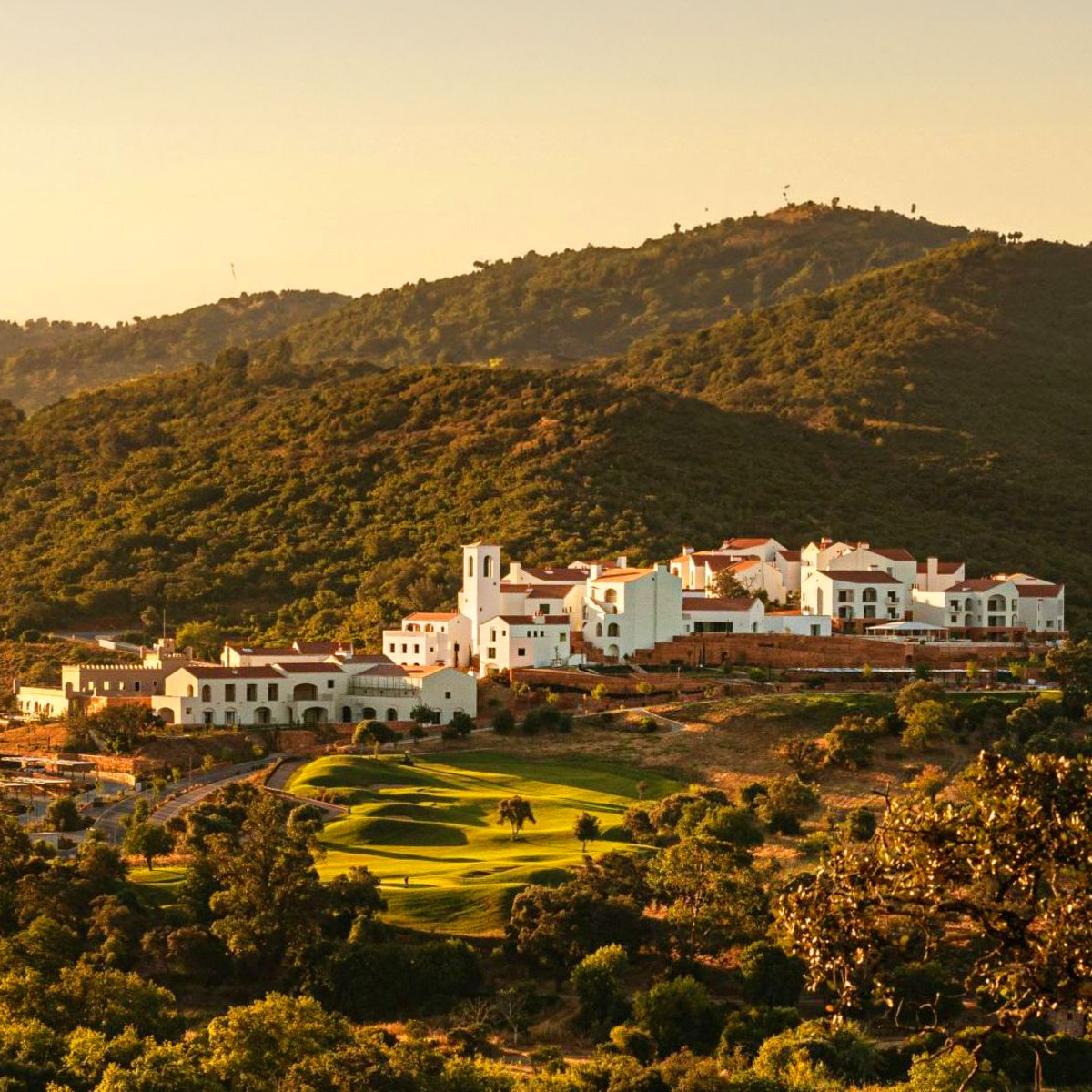
In this story you’ll meet fifteen Portuguese hotels recently added to our selection. You’ll also hear, once again, about the country’s seemingly never-ending tourism boom.
By Mark Fedeli
Marketing and Editorial Director, Tablet Hotels
Talk around the water cooler at Tablet regularly centers on Portugal and its gravity defying tourism boom. Ten years ago we marveled at how impressive the growth had been, but just last year the country set yet another new record for overnight stays. To paraphrase Willy Wonka, the rowers keep on rowing and Portugal’s popularity shows no signs of slowing.
The growth has been accompanied by a corresponding increase in hotel openings. Each time we do a story about Portugal’s incredible boutique hotel bounty — like here, and here — we assume we’re at the crest of the wave, a Nazaré-sized swell that must surely be breaking soon. But it never does. It’s a wonder.
Back in our New York offices, we see this country with a population the size of Michigan and an area the size of Maine and we marvel at the amount of design-forward and/or architecturally daring hotels to be found there. If we’re being completely honest, we get a little jealous too. In major cities but especially in the rural regions of Algarve and Alentejo and the Azores, cutting-edge boutique hotels are constantly being opened.
Which is all to say, here are fifteen unforgettable hotels in Portugal that we recently added to our selection.
Quinta Camarena
Cercal do Alentejo, Portugal
The first part of the story is a familiar one: a pair of New Yorkers set out for Alentejo in search of their dream home. What brings it to our attention is the fact that, after they found it on a forested hillside near the beach, they didn’t keep it all to themselves. This is Quinta Camarena, a sustainability-focused boutique hotel that doubles as a laid-back retreat for surfers and yoga enthusiasts.
Torel Quinta da Vacaria
Peso da Régua, Portugal
Tucked away amid some of the oldest vineyards in the Douro Valley, one of the world’s most historic wine regions, Torel Quinta da Vacaria is unexpectedly modern. The boutique hotel occupies a small collection of old buildings on a historic wine estate, but the interiors got a facelift: rooms are sleek and silent with pale wood flooring, midcentury modern decor, and private balconies or terraces, many with open-air tubs.
Herdade da Malhadinha Nova
Albernoa, Portugal
At the heart of a sun-dappled swath of Portuguese farmland dotted with vineyards and olive groves, Herdade da Malhadinha Nova is a quiet paradise for wine enthusiasts. The luxury hotel occupies just a small portion of a vast 1,000-acre property in the beautiful and sparsely populated region of Baixo Alentejo. Guest rooms and suites are housed in a collection of villas generously spread out among the landscape.
Village by BOA
Porto, Portugal
There’s nothing else in Portugal quite like Village by BOA. This corner of Porto is known for its distinctive terrace-style townhouses, designed in the 19th century as housing for workers’ families. And after a long period of disuse, five of these houses have been transformed by BOA and Bacana Design Studio into a luxurious and stylish collection of apartment-style hotel suites.
Casas da Quinta de Cima
Faro, Portugal
Once the workers’ cottages on a 19th-century agricultural estate, Casas da Quinta de Cima has been reimagined by the same family five generations on. Each of the nine suites pairs high wicker ceilings and terracotta floors with marble baths, wood-burning stoves, and vintage touches. Private terraces look onto groves of orange and avocado, with the sea just beyond. The estate’s farm-to-table culinary approach is a particular highlight.
Quinta de Silvalde
Santo Tirso, Portugal
Just outside Porto is the historic town of Santo Tirso, originally built around a 10th-century monastery, and later a hub of Portugal’s busy textile industry. Quinta de Silvalde is easily one of the most stylish places to stay, and like Santo Tirso itself, known for its colorful gardens and antique mansions, this boutique hotel is heavy on peaceful greenery and historic charm.
JAM Hotel Lisbon
Lisbon, Portugal
After launching their flagship property in Brussels, JAM Hotels expanded to Lisbon, applying the same successful formula — snapping up an old office building and transforming it into a youthful, art-filled boutique hotel — on a commercial block in the riverside neighborhood of Santos. The concept works just as well here, if not better, considering the stark contrast between the building’s past and present.
Independente Comporta
Grândola, Portugal
Comporta sits on a stretch of the Alentejo coast where rice paddies and pine forests border white-sand beaches. The area’s best hotels, like Independente Comporta, were specifically designed to complement its unusual landscapes. The hotel is set back from the sea in the quiet countryside, and its design was inspired by the layout of a traditional Portuguese village, with whitewashed villas outfitted by local artisans.
AlmaLusa Alfama
Lisbon, Portugal
In Lisbon’s oldest neighborhood, a medieval arch connects the riverfront square Campo das Cebolas and the busy blocks around the cathedral. Built by ancient Romans, the passageway is even older than the surrounding building, a 12th-century landmark with a cheerful yellow Pombaline-style façade — and all of it, after extensive restorations, is part of AlmaLusa Alfama.
Villa Cascais Boutique Hotel
Cascais, Portugal
A half-hour’s drive to the west from Lisbon brings one to the Bay of Cascais, and the town of the same name, playground and inspiration to the likes of Ian Fleming and multiple generations of European royalty. The Villa Cascais Boutique Hotel is a repurposed 19th-century dwelling standing at shoreside, whose tasteful accommodations celebrate the luxury of years past while urging guests to indulge in the present.
Vale d’Azenha
Alcobaça, Portugal
Many travelers passing through medieval Alcobaça stay in hotels located inside old chalets or restored monasteries. The hilltop Vale d’Azenha Hotel & Residences offers a contemporary alternative. In a rural area just minutes from the historic center, this luxury hotel’s eye-catching architecture is unmistakably modern, its sharp angles and geometric shapes reflected in the large aquamarine-tiled swimming pool.
The Pergola Boutique Hotel
Cascais, Portugal
There’s a sweet story behind the Pergola, a 15-room boutique hotel a short stroll from the beach in the fishing village of Cascais. In 1925, a local businessman purchased a pair of side-by-side chalets with a French-style garden in the middle, then renovated them and gifted them to his two daughters. They remained in the family until the mid-1980s, when one of the chalets was turned into the town’s very first hotel.
The Reserve Hotel
Madeira, Portugal
If the name Savoy Palace doesn’t sound glamorous enough on its own, consider the idea of an exclusive hotel-within-a-hotel occupying the penthouse level — a place with a private rooftop pool and personal assistants on hand around the clock to attend to guests’ every need. This is The Reserve, a luxurious boutique hotel located on the uppermost six floors of Funchal’s towering waterfront landmark.
Pátio do Tijolo
Lisbon, Portugal
Pátio do Tijolo is only accessible via a hidden passageway. The setting may be private, but once inside, this boutique hotel is a surprisingly sociable place. The open design takes inspiration from the Portuguese concept of a patio or shared space; indoor and outdoor communal areas include a leafy courtyard, a modern kitchen, and a stylish living room ideal for reading or relaxing.
Viceroy at Ombria Algarve
Loulé, Portugal
Viceroy at Ombria Algarve enjoys a privileged position in the lush, rolling Algarve hills, on a pristine estate sequestered far from the crush of the beach crowd. There’s an 18-hole golf course, a decadent spa, a selection of bars throughout the resort, and four pools with private cabanas and tableside service. Sleek accommodations range from individual rooms to full-fledged residences.

Mark Fedeli is the hotel marketing and editorial director for Tablet and Michelin Guide. He’s been with Tablet since 2006, and he thinks you should subscribe to our newsletter.

















